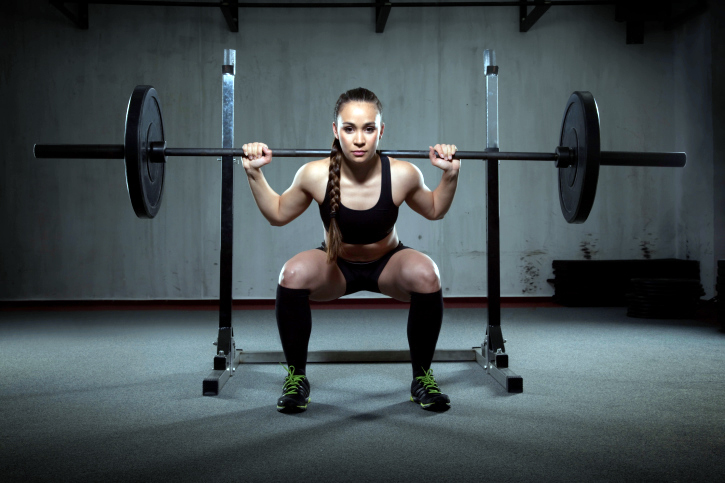Why You’re Doing Squats Wrong

by Abby Austin
Acknowledged as the most essential exercise for any fitness goal, the squat is also one of the most difficult exercises to perform properly. Few exercises work as many muscles simultaneously as the squat, making it a brilliant multi-purpose workout ensuring muscle growth and fat burning for your glutes, core, and legs. However, because so much of your body is engaged during a squat, it’s easy to have poor technique. Whether you are doing air squats or heavy weight, you will not reap desired benefits or worse, injure yourself.
Here are the most common mistakes in performing a squat:
- You are not going low enough
A shallow squat, sometimes known as a half squat, will greatly influence your leg development and leave you apt for injury. Shallow squats occur because you are trying to squat too much weight, you have other form issues, or a combination of both. Your thighs must be at least parallel with the floor when at the bottom of your squat; a 90 degree knee bend. Surely, you’ve heard the term, “ass to grass” referenced when doing a squat. Well, there’s truth behind it. The deeper you go, the more engaged your hamstring and glutes are. While there are variances of a squat that reduce your range of motion, a full squat should be mastered first.
- Extending your knees too far forward
Often credited with causing knee injuries, squats are perfectly safe with the right knee placement. Your knees should be aligned with your hips and feet. Keeping stable, you should not have excessive movement inside or out, as your knees should not pass your toes. When your knees extend in or out beyond a few degrees, your tendons and ligaments become vulnerable. If they start to, sit back into the squat further.
- Rounding your back
You should never round your lower back when squatting, as it puts incredible stress on your intervertebral discs in your lower spine. As you add more weight to your squat, this becomes progressively more dangerous. Instead, keep a flat back by locking your spine in a slightly arched position. Be sure you don’t hyper-extend your back either.
- Not breathing correctly
Proper breathing technique is crucial to get the best results in weight training, especially a squat. Lifters mistakenly think to breathe out as you lift weight. When performing a squat, you want to inhale before you drop down, then hold your breath until you reach the top of the movement. By holding your breath, you will increase the intra-abdominal pressure, keeping you core tight. Once you reach the top of the rep, exhale.
- Knowing where to look
While it has been taught in the industry to look up during a squat, advocating that it is safer for the spine, it’s actually just the opposite. Looking up curves the cervical portion of the spine, which could lead to disc injury when hundreds of pounds are added. You will want to maintain a neutral arch in your cervical spine, meaning – look directly forward.
- Not keeping your weight on your heels
Throughout the squat, you need to be resting your weight on your heels for the entire movement, instead of your toes or balls of your feet. By having poor ankle mobility or bad form in other areas, squatters will often come on their toes as they squat down. As a result, they will press the weight up though their toes when coming back up, limiting potential power. It can also harm your knees as well as remove the movement from benefiting your hamstring and glutes.
Recommended Posts
Back Sculpting and Bicep Workout with Dumbbells at Home
February 23, 2021
10 Minute Firm Abs Workout – No Equipment (Total Abs)
February 19, 2021
Intense Glute Workout with Mini Band – No Repeat
February 16, 2021
